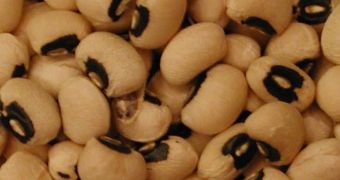Plants are not as "vegetable-like" as we tend to believe they are. Being still (or apparently still) does not mean they do not perceive their environment and species around. Many trees are capable of communicating through pheromones. Parasite plants "smell" their preferred hosts, which they will choose when they can. In the same pot, plants can recognize their siblings, against which they will not trigger a "root" war.
Now, researchers at Agricultural Research Service (ARS) in Gainesville, Florida, have found a new plant ability: cowpea plants can indirectly detect attacks from fall armyworms by tracking down and responding to degradation products of their own tissues. If the plants' defense response could be boosted, this would help protecting crops. Other researches have revealed that plants can indirectly perceive pathogen attacks and defend themselves against these germs; but in this case, insect attacks are involved.
The indirect detection of insects points out the fact that the plant doesn't recognize the pests directly. The plant actually responds to abnormal digestive protein fragments of itself, resulted through its own digestion in the insects' gut during an insect attack. This triggers a series of biochemical actions aiming to impede further injury.
Armyworms are caterpillars belonging to the Noctuide family (a group of moths) and which represent one of the most destructive crop pests. The team led by plant physiologist Eric Schmelz isolated and described a small peptide, named inceptin, from the oral liquids of fall armyworm (Spodoptera frugiperda) larvae. In cowpea (blackeyed pea) plants (Vigna unguiculata), inceptin boosted the synthesis of ethylene and other defensive phytohormones. Still, in lab tests, only fall armyworm caterpillars producing over a threshold inceptin amounts triggered cowpea defenses.
The plants' defensive reaction either directly impedes pest growth, or promotes positive interactions with beneficial organisms. Cowpeas form one of the most important food legume crops in the semi-arid tropics, being cultivated in Asia, Africa, southern Europe and Central and South America, due to their tolerance to poor, dry soils. In 2005, the US produced about 23,000 tons of cowpeas.

 14 DAY TRIAL //
14 DAY TRIAL //